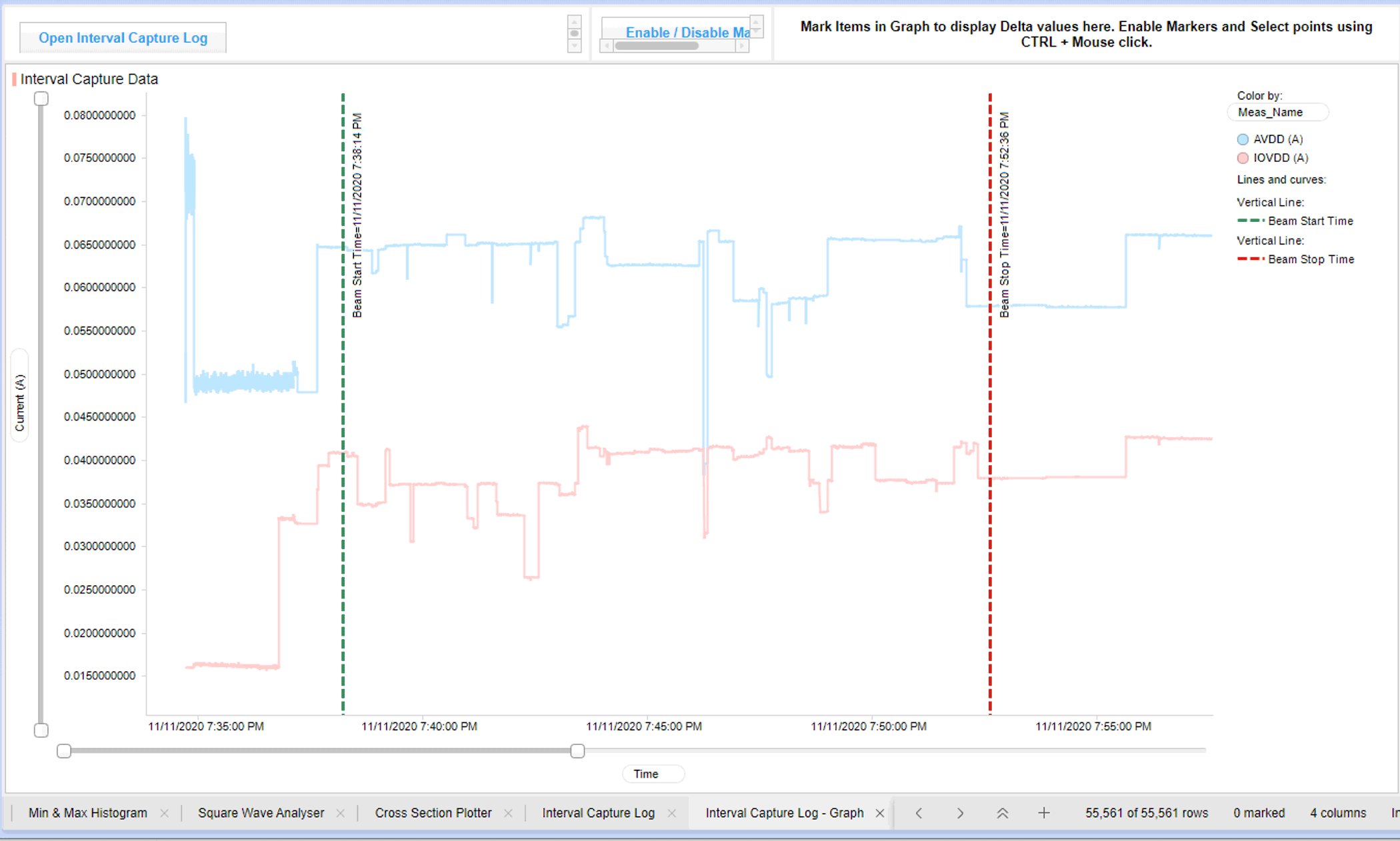SBAK019 May 2024 ADC3683-SP
- 1
- 2
- Trademarks
- 1 Introduction
- 2 Single-Event Effects
- 3 Device and Test Board Information
- 4 Irradiation Facility and Setup
- 5 Depth, Range, and LETEFF Calculation
- 6 Test Setup and Procedures
- 7 Destructive Single-Event Effects (DSEE)
- 8 Single-Event Transients (SET)
- 9 Event Rate Calculations
- 10Summary
- 11References
7.1 Single-Event Latch-Up (SEL) Results
During SEL characterization, the device was heated using forced hot air, maintaining the DUT temperature at 125°C. The die temperature was monitored prior to radiation using a FLIR IR-camera.
The species used for the SEL testing was Praseodymium (141Pr) ion with an angle-of-incedence of 30° for an LETEFF = 79MeV×cm2/ mgm. Flux of 105 ions / cm2× s and a fluence of 107 ions/cm2 were used for the three runs. Run duration to achieve this fluence was less than two minutes. The device was powered up and exposed to the heavy-ions using voltages up to 1.9V, with 1.85V being the maximum recommended operating voltage. No SEL events were observed during all three runs, indicating that the ADC3683-SP is SEL-free. Table 7-1 shows the SEL test conditions and results. Figure 7-1 shows a typical plot of current versus time for an SEL testing.
| Run Number | Unit Number | Temperature | LETEFF (MeV × cm2/mg) | Flux (ions × cm2/s) | Fluence (ions × cm2) | AVDD/IOVDD (V) |
|---|---|---|---|---|---|---|
| 1 | 1 | Room temperature, approximately 25°C | 51.12 | 1.85 × 104 | 1.00 × 107 | 1.9 |
| 2 | 1 | 125°C | 51.12 | 1.80 × 104 | 1.00 × 107 | 1.9 |
| 3 | 1 | 125°C | 78.67 | 1.53 × 104 | 1.00 × 107 | 1.9 |
| 4 | 1 | 125°C | 78.67 | 1.62 × 104 | 1.00 × 107 | 1.9 |
| 5 | 1 | 125°C | 78.67 | 1.00 × 105 | 1.00 × 107 | 1.85 |
| 6 | 1 | 125°C | 78.67 | 1.00 × 105 | 1.00 × 107 | 1.85 |
| 7 | 1 | 125°C | 78.67 | 1.00 × 105 | 1.00 × 107 | 1.9 |
 Figure 7-1 Current vs Time for ADC3683-SP
at T = 125°C
Figure 7-1 Current vs Time for ADC3683-SP
at T = 125°C